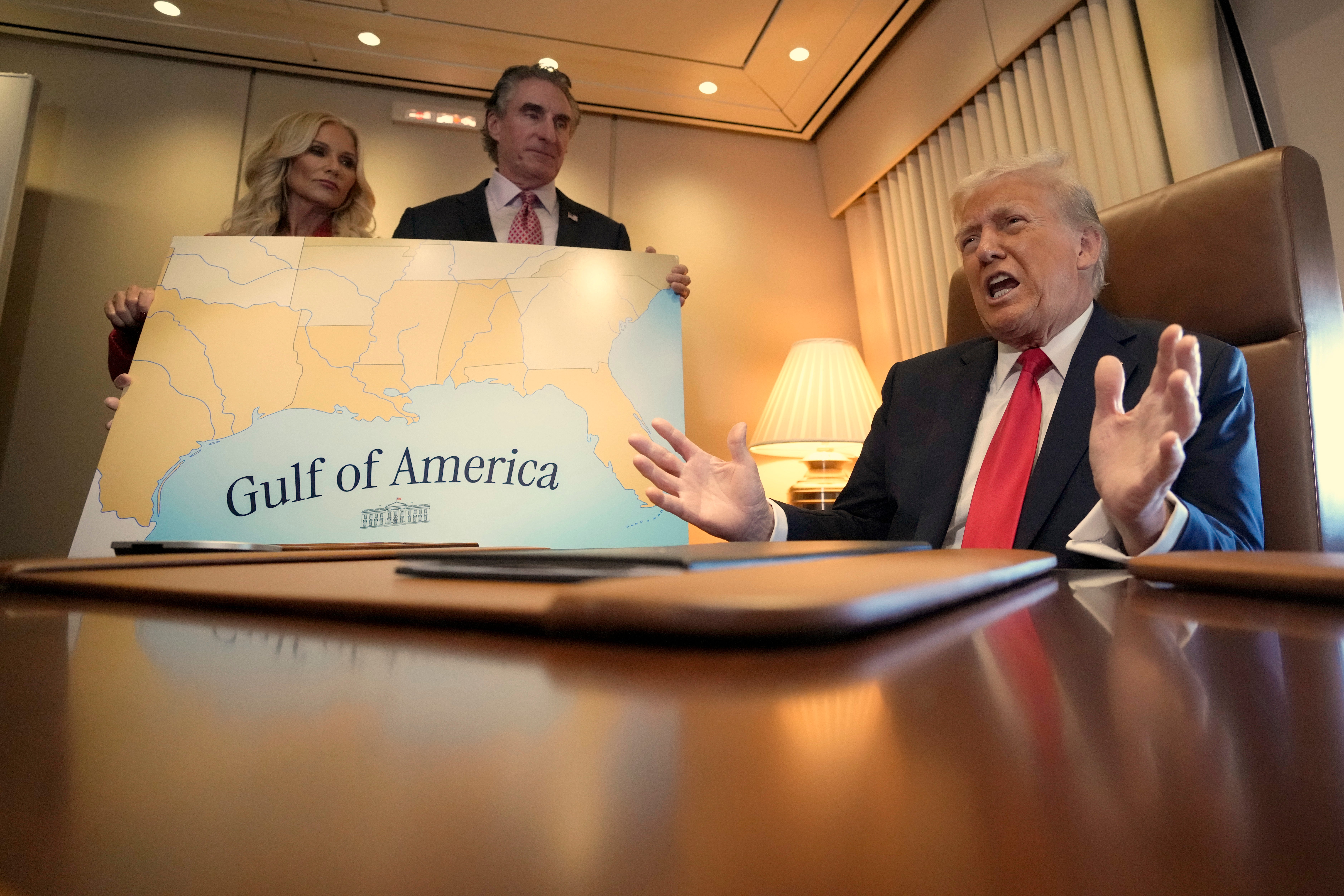President Donald Trump followed through on his promise to rename the Gulf of Mexico to the “Gulf of America.”
Trump issued an executive order shortly after taking office to rename the gulf, and this week the federal Board on Geographic Names formally changed the name of the body of water to the “Gulf of America.”
Trump also ordered that Denali — the highest mountain in North America — be reverted back to Mount McKinely, according to the New York Post.
On Super Bowl Sunday, Trump flew over the gulf in Air Force One and declared it the first ever “Gulf of America Day.”
Trump’s announcement comes at the same time as Republican Representative Buddy Carter’s new bill aiming to change the name of Greenland — which is not under the authority of the US — to “Red, White and Blueland.”

Google Maps has already adjusted the name of the gulf for American users. The name of the gulf is now the “Gulf of America” on the app. Apple Maps has done the same.
The Trump White House is reportedly punishing media outlets who don’t recognize his executive order to change the name; the Associated Press claims one of its reporters was barred from a Trump event on Tuesday because the wire service did not refer to the gulf as the “Gulf of America” in one of its stories.
Trump insisted earlier this year that the gulf’s name should celebrate the U.S. rather than Mexico.
The nations with the most “control” over the gulf are the U.S., Mexico, and Cuba, and for years have shared the body of water. The gulf serves as an important center of economic activity, including fishing, electricity generation, and shipping.
Why does the gulf bear Mexico’s name? It’s actually not a reference to the modern state of Mexico, but rather to a Native American city bearing the same moniker, and it has borne that name for more than 400 years.
Despite the fact that the gulf is shared by multiple nations, Trump recently said that the U.S. does the “most work” on the gulf, and insisted that the body of water should bear America’s name “because it’s ours.”
While ownership is up for debate, it’s true that the U.S. has claimed control over much of the gulf. The UN Convention on the Law of the Sea determined that U.S. territorial waters expand for 12 nautical miles from its shores, and the U.S. federal government manages the seas and the submerged parts of the Outer Continental Shelf as well.
Trump ally Congresswoman Marjorie Taylor Greene previously said she planned to introduce legislation to change the name of the gulf, though it ultimately wasn’t necessary due to Trump’s executive order.
“The American people are footing the bill to protect and secure the maritime waterways for commerce to be conducted. Our U.S. armed forces protect the area from any military threats from foreign countries,” she said at the time. “It’s our gulf. The rightful name is the Gulf of America and it’s what the entire world should refer to it as.”
Despite Trump’s executive order requiring a name change in state and federal language, there is nothing forcing other nations to adhere to that decision.
Trump’s decision to rename the gulf may be part of a broader offensive against Mexico, calling the nation “very dangerous” and “in a lot of trouble,” citing drug trafficking and illegal immigration. However, most drug trafficking from Mexico is aimed at fulfilling consumer demand from Americans.
Trump also proposed imposing tariffs on both Mexico and Canada if the nations do not meet his demands for stopping illegal immigration and curbing drug trafficking. He claimed that America’s neighbors are responsible for significant amounts of drug and illegal immigrant crossings, but did not provide data or evidence for his claims. The president eventually backed off his tariff promises after his initial threats.
If Mexican President Claudia Sheinbaum Pardo said she would ignore Trump’s executive order, and urged other world leaders to do the same. She has, however, responded to his threats to impose tariffs, telling the former president that the cartel violence in Mexico — and the instability it causes — is fueled by American demand for illegal drugs and US-made weapons being smuggled into the country.
Trump has proposed potential US military incursions into Mexico to engage drug cartels, said he would name Mexican drug cartels “terrorist organizations,” and elsewhere in Central America has accused Panama of overcharging U.S. shipping vessels for use of the Panama Canal.

